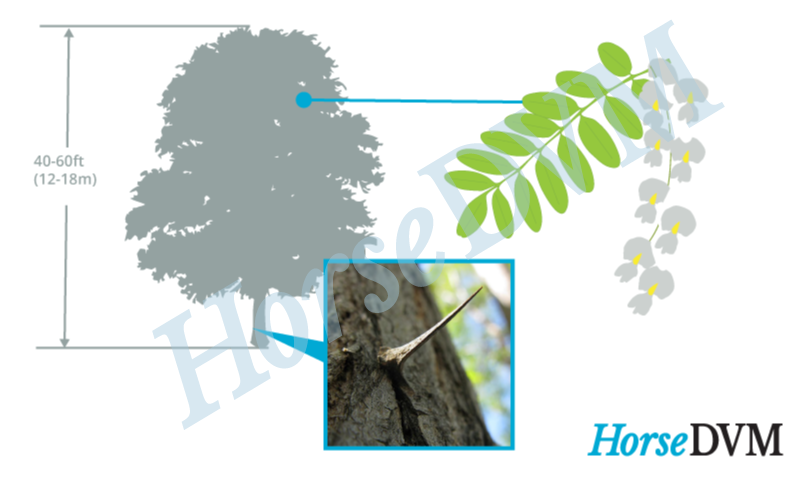Black locust (
Robinia pseudoacacia) is a perennial shrub or medium-sized, deciduous, fast-growing tree from the bean (Fabaceae) family. It is native to North America, and found growing in the Appalachian mountains from Pennsylvania to Alabama as well as parts of the Midwestern United States.
Black locust is often planted as an ornamental for landscaping, for its showy aromatic flowers. Identifying characteristics for black locust trees:
- Height: 40 to 80 feet tall
- Diameter: Mature trunks are usually 3 to 4 feet in diameter
- Bark: Reddish-brown to dark brown, slightly cracked, and furrowed on young trees. The bark becomes deeply furrowed on older trees.
- Twigs & Branches: The twigs may be slender or stout, and somewhat brittle. Pairs of stiff spines are found at the base of each leaf stalk (petiole) on younger branches, which can grow up to 1 inch in length. Shoots of young plants are zigzagged, green and smooth that turn red brown with age. Sharp spines develop in pairs, at the base of leaf petioles and stems; these will eventually turn into woody spines up to 1 in long. When cut, shoots will readily sprout from stumps.
- Flowers: Flowers are fragrant, white, pink or purple, medium-sized, and grow in long, drooping pea-like clusters from 4 to 8 inches long.
- Root system: Black locust roots spread laterally, just above the soil surface.
- Fruit: Large (2 to 4 inches long), flat, hairless, red to dark brown, thin pods appear in September, that contain four to eight kidney-shaped, brown seeds within each pod. Pods resemble a long, thin butterbeans. Fruits will often remain on tree branches until the following spring.
- Leaves: Alternately arranged along stems, medium to dark green in color, and divided into two rows of 7 to 19 leaflets. Individual leaves are elliptic to oval leaflets that are 8 to 14 inches long.
Toxic components
Black locust contains several lectins, which are a diverse group of proteins often found in plants as well as microorganisms that bind carbohydrates, precipitate glycoproteins, and agglutinate cells. The most important toxic constituents of the black locust tree are robin and robinin, which are large proteins called toxalbumins similar to ricin. The toxin is particularly prevalent in the inner bark, seeds, and leaves. Once the toxins are absorbed into the blood stream, rapid multi-system organ failure follows close behind. Symptoms of poisoning present 1-2 hours following ingestion of toxic quantities of black locust.
Most reported cases of poisoning involving horses were the result of horses eating the young shoots or chewing the bark from tree trunks. Ingestion of black locust tree parts causes
black locust toxicity in horses.
